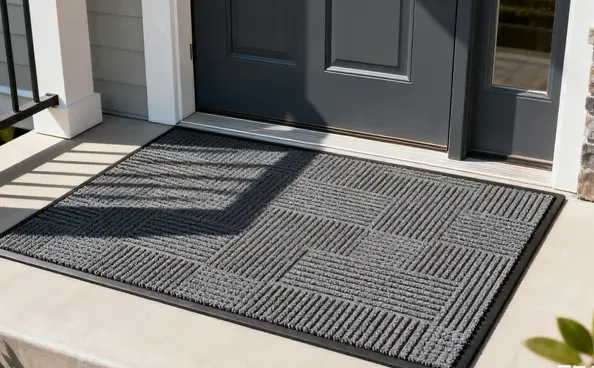When it comes to home decor, one element that often gets overlooked is the humble doormat. While doormats are commonly placed at the entrance, many people wonder whether they should also be positioned inside the door. The truth is, having a mat inside your home can make a significant difference in maintaining cleanliness and adding to the overall aesthetic of the space. But is it really necessary?
Having an indoor doormat helps keep your floors clean, provides comfort, and adds a welcoming touch to your entryway.
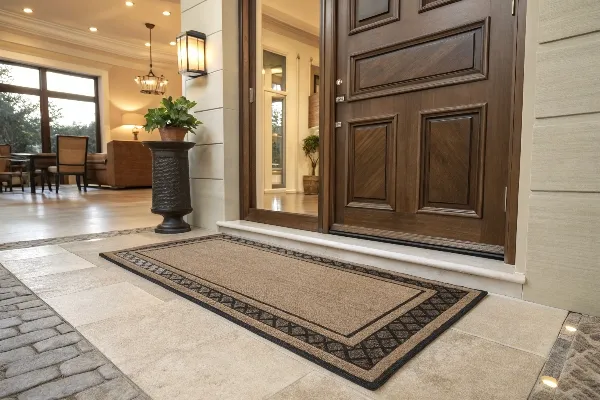
An indoor doormat serves multiple purposes, from catching dirt and moisture to enhancing the style of your home. In this article, we’ll dive into the reasons why you might want to consider placing a mat inside your front door, how to choose the right one, and other essential tips.
How often should you change your doormat?
A doormat does more than just catch dirt—it also absorbs moisture, preventing it from being tracked into your home. Since doormats can quickly get dirty and worn, it’s essential to know when to replace them to ensure they continue serving their purpose.
You should change your doormat every 3-6 months1, or sooner if it becomes excessively worn or dirty.
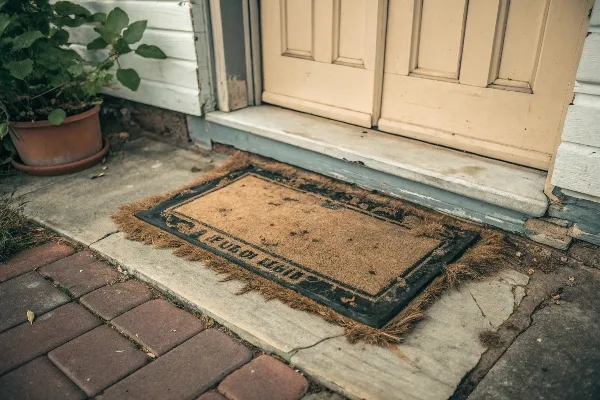
Signs that Your Doormat Needs Replacing
- Visible Wear and Tear: If the mat’s fibers are fraying or there are holes, it’s time for a replacement.
- Stubborn Stains: Over time, dirt and moisture can cause permanent stains, making it difficult to clean the mat.
- Flatness: A mat that has lost its shape or cushioning is no longer effective at absorbing dirt and moisture.
- Odors: If your mat starts to smell even after cleaning, it may no longer be hygienic to use.
How to Maintain Your Doormat
- Shake it out regularly: Dust and dirt can accumulate quickly. Shake the mat outside every week to remove debris.
- Clean it often: Depending on the material, doormats can often be vacuumed, washed by hand, or machine washed. Check the cleaning instructions on your mat for the best care.
- Rotate it: If your mat has a reversible side, rotating it will help prevent uneven wear and tear.
Which color door mat is good?
Choosing the right color for your doormat is essential for both practical and aesthetic reasons. A doormat’s color can either complement or clash with your entryway decor, so it’s worth taking some time to find the perfect match.
Neutral tones, dark colors, and patterned mats2 are great choices for a doormat, as they hide dirt and create a welcoming vibe.
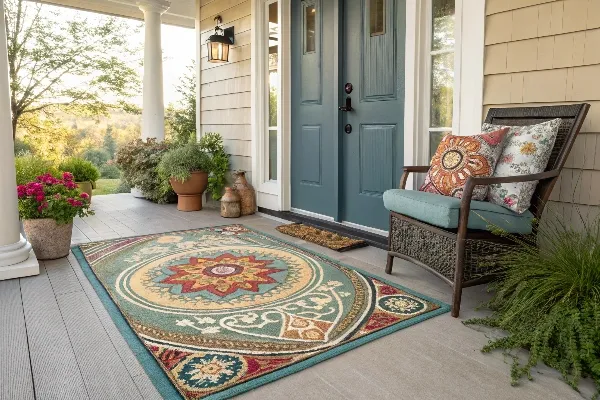
Best Colors for Doormats
- Dark Colors (Gray, Navy, Black): Darker colors are practical because they hide dirt, mud, and stains. They’re ideal if you live in a place with rainy or snowy weather, as they will look cleaner for longer.
- Neutral Colors (Beige, Tan, Brown): Neutral tones work well with most home styles and create a warm, inviting atmosphere.
- Bright Colors (Red, Green, Blue): Brightly colored mats can add a cheerful touch to your entrance, especially during the holidays or when you want to make a statement.
What to Avoid
- Light Colors: Light-colored doormats (like white or pastel shades) may not be practical for areas with a lot of foot traffic or dirt, as they show stains more easily.
- Overly Bold Patterns: While some bold patterns can add personality, be mindful of how they fit with your existing decor. Too many patterns can make the entryway feel cluttered.
Why do people put a door mat at the front door?
The front door is the first thing visitors see when they arrive at your home, and a doormat is a simple yet effective way to set the tone. But a doormat isn’t just about appearance; it also serves several important functions that make it a must-have item for any entryway.
People put a doormat at the front door to keep the home clean, prevent slips, and create a welcoming entrance.
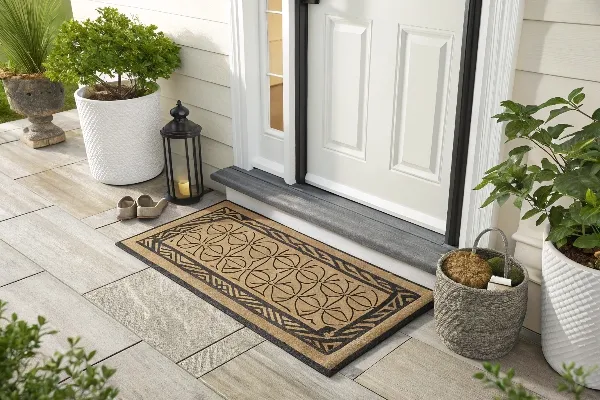
Practical Reasons for a Front Door Mat
- Dirt and Moisture Control: A doormat helps trap dirt, dust, and moisture from shoes, preventing it from being tracked inside the home.
- Safety: Mats, especially those with non-slip backing3, provide an extra layer of safety by preventing slips and falls at the entrance.
- Hygiene: A mat at the front door keeps the area cleaner, helping maintain a healthier environment inside the home.
- Decorative Touch: A doormat can add character and style to the entrance, creating a welcoming vibe for guests.
Emotional and Cultural Significance
Doormats often carry a sense of hospitality. Phrases like "Welcome" or "Home Sweet Home" are commonly used on mats, reinforcing the idea that your home is a warm and inviting space for guests.
Should I have a mat inside of the front door?
You may already have a doormat outside your front door, but is it necessary to add one inside as well? While an outside mat is essential for cleaning shoes and preventing dirt, an indoor mat can offer additional benefits.
Yes, placing a mat inside the front door is a good idea to further protect your floors and enhance the comfort of your entryway.
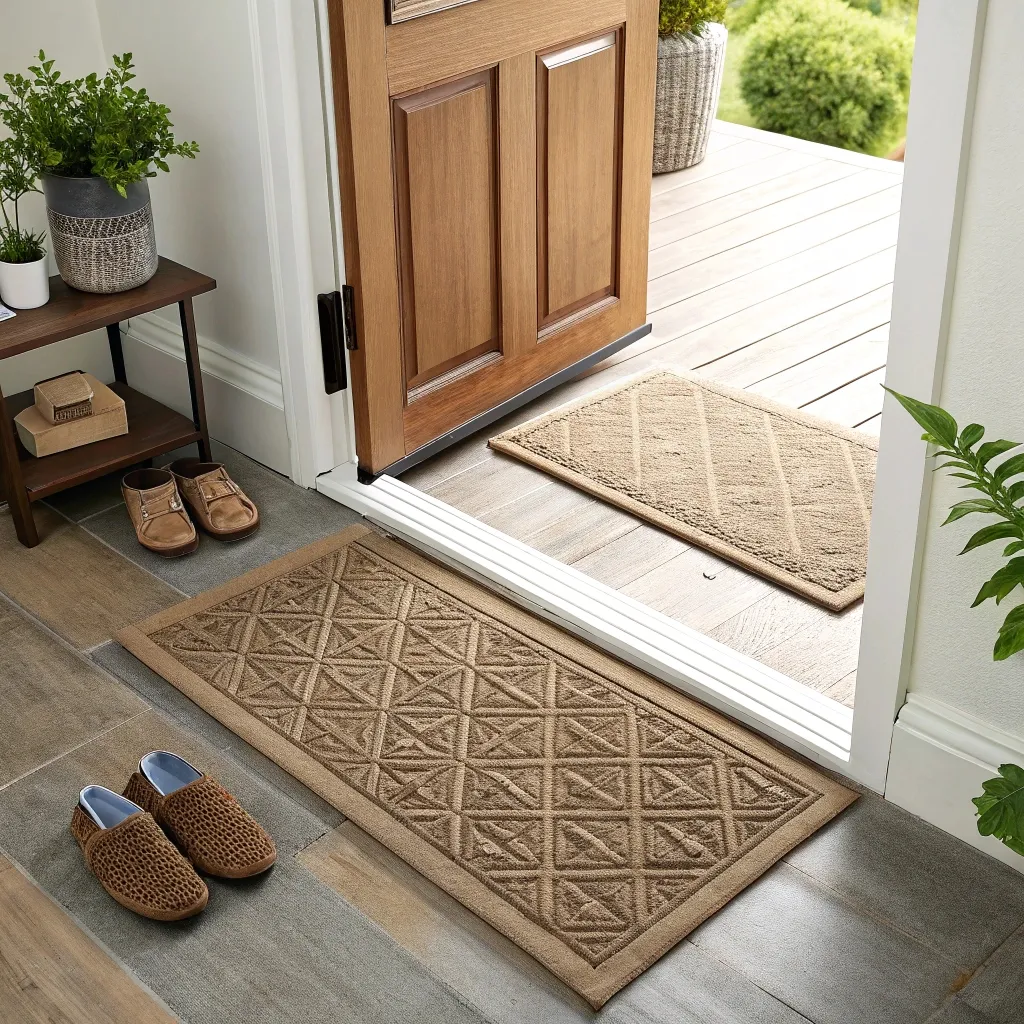
Why an Indoor Mat is a Good Idea
- Extra Moisture Absorption: An indoor mat catches any remaining moisture or dirt that might still be on shoes after stepping inside. It prevents water from spreading onto your floors and causing damage.
- Comfort and Warmth: Having a soft mat inside the door provides comfort when you step in from the cold. It also adds warmth to the entryway during winter months.
- Protecting Your Floors: Indoor mats help protect flooring materials like wood, tile, or carpet from dirt, wear, and stains.
How to Choose an Indoor Doormat
Look for mats that are designed to trap dirt and moisture. Choose materials like microfiber or memory foam, which are highly absorbent and easy to clean. If you have hardwood or tile floors, choose a mat with a non-slip backing to avoid accidents.
How do I choose a doormat?
Choosing the right doormat involves considering several factors to ensure it suits both the practical needs of your home and your personal style. Here are some things to keep in mind when selecting a doormat.
Consider the material, size, and functionality4 of the doormat to ensure it fits your home’s entryway perfectly.
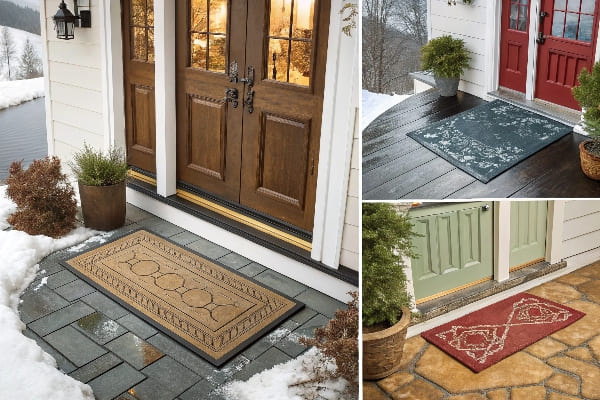
Key Factors to Consider
- Material: Doormats come in a variety of materials, including coir, rubber, and synthetic fibers. Coir mats are great for outdoor use, while rubber and microfiber mats are often better for indoor settings.
- Size: Choose a mat that fits the size of your entryway. It should be wide enough to accommodate at least two steps, but not so large that it overwhelms the space.
- Functionality: If you want a mat that can handle wet conditions, go for an absorbent option like microfiber. For heavy-duty dirt trapping, a coir or rubber mat will work best.
- Style: Your mat should complement the aesthetic of your home. Choose a color or pattern that matches the rest of your decor and reflects your personality.
- Ease of Cleaning: Make sure the mat is easy to clean, especially if it will see a lot of foot traffic. Many mats are machine washable or can be vacuumed with ease.
Conclusion
Having an indoor doormat is a great way to keep your home clean and welcoming. It helps trap dirt, moisture, and debris before they spread throughout your house, keeping your floors in better condition. By choosing the right mat for your entryway and replacing it regularly, you can maintain a cleaner and more inviting space for yourself and your guests.
-
Understanding the right frequency for changing your doormat can help maintain cleanliness and hygiene in your home. ↩
-
Explore this resource to understand how these color choices can enhance your entryway while being practical and stylish. ↩
-
Discover why non-slip backing is crucial for safety and how it can prevent accidents at your entrance. ↩
-
Exploring the features of functional doormats can guide you in selecting one that meets your specific needs and conditions. ↩

